1,577 days, 2,409 entries ...
Newsticker, link list, time machine: HOLO.mg/stream logs emerging trajectories in art, science, technology, and culture––every day
Drawing inspiration from the simplest of pixel aesthetics, Shinji Murakami’s solo exhibition “2600” opens at New York’s NowHere. Down the Atari 2600 rabbithole since 2021, Murakami makes and mods 2600 games; at NowHere the Japanese artist builds bridges between his hobby and his art practice. The show presents recent acrylic paintings rendered in the 8-bit style (image: Pattern (Pizza Boy), 2024), and some are accompanied by a QR code for viewers to scan, and then play Murakami’s retro videogame creations.
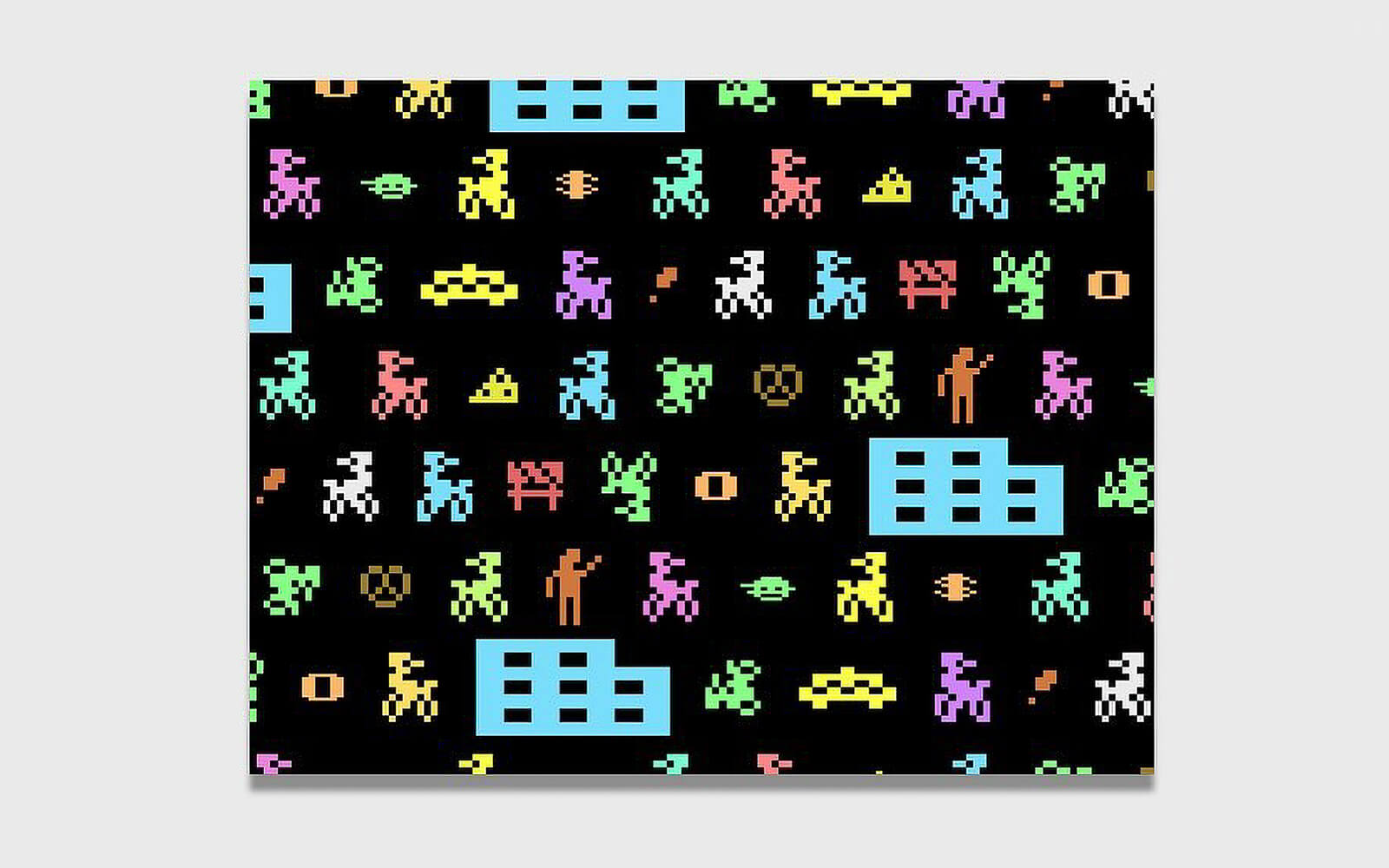
A timely showcase of early computer drawing and painting in the age of generative AI, “Harold Cohen: AARON” opens at New York’s Whitney Museum. Curated by Christiane Paul, it honours Cohen’s pioneering 1970s and ’80s process, with recreations of his plotters running live in-gallery (each operating different versions of the AARON software) alongside key works. “Cohen used to joke that he would be the only artist ever who posthumously makes work,” says Paul of the late artist’s enduring prescience.
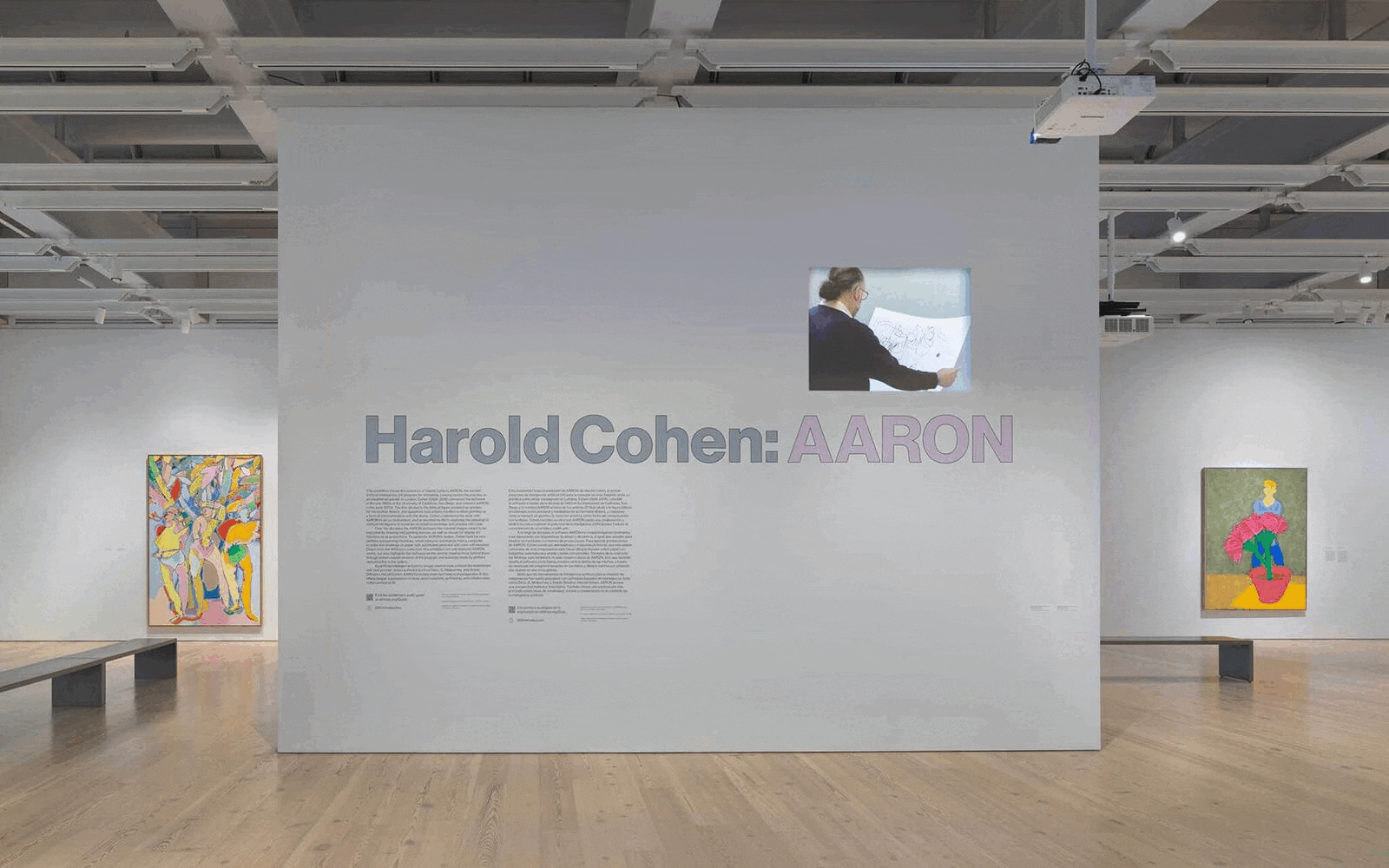
“GEN/GEN: Generative Generations,” a generative art survey linking practitioners past and present, opens at Gazelli Art House London. Artists including Sougwen Chung, Licia He, Tyler Hobbs, Rhea Myers, Piter Pasma, Melissa Wiederrecht, and Stephen Willats contribute prints, plots, screen-based works, and NFTs. Multi-generational, visitors can take in 1980s paintings by Harold Cohen’s prescient AARON program in one glance and Brendan Dawes’ sculpture You, Me And The Machine (2022), the next.
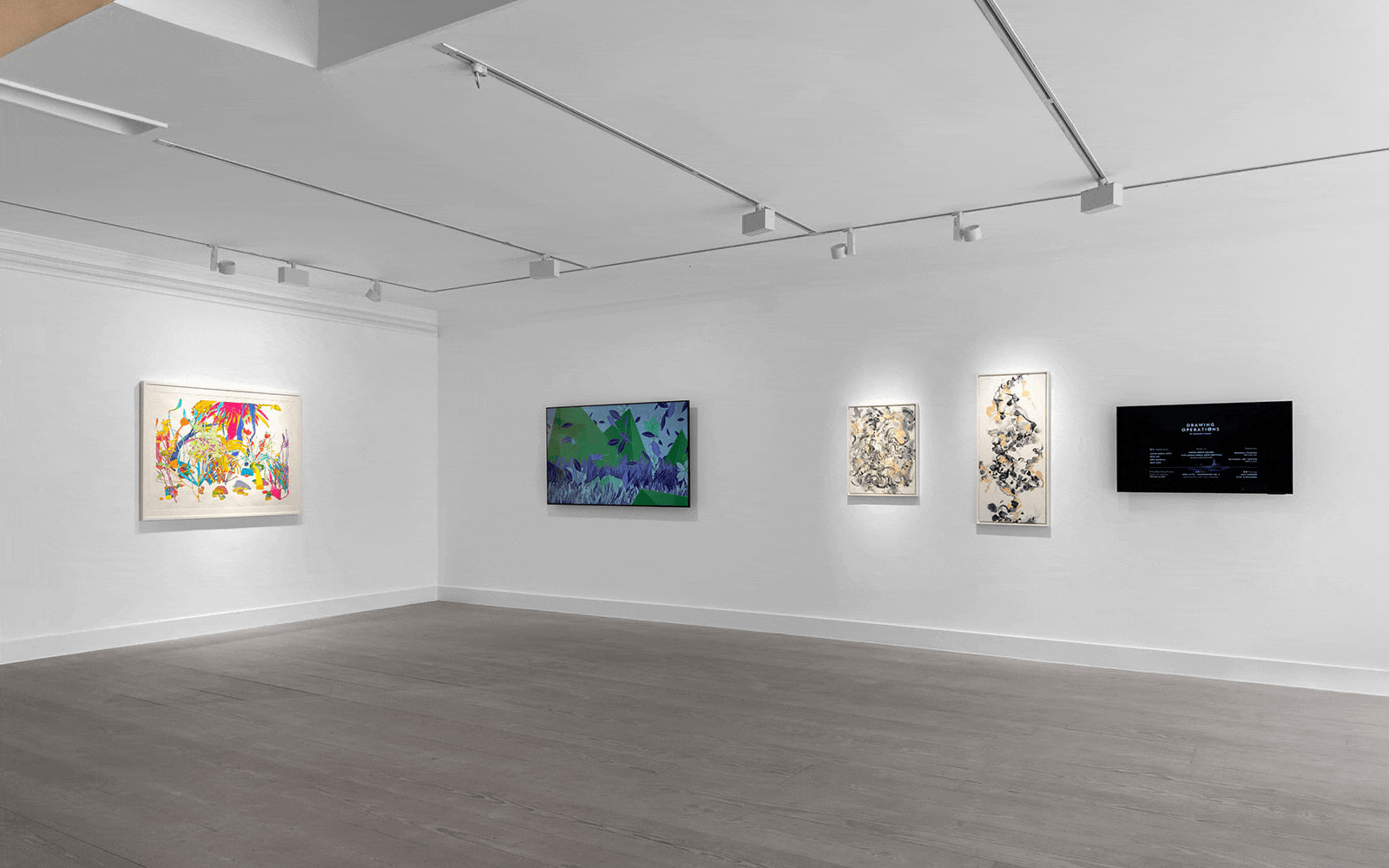
“What’s the default language that you go to to do that? It’s the modernist grid. That’s how you understand making new lands. That’s how you understand these digital frontiers. ”
“WE DID THIS TO OURSELVES,” a survey of Ron Terada’s news and typography-focused works, opens at The Power Plant in Toronto. Grimly articulating the surrealism and noise of the post-truth information landscape, the Canadian artist’s monumental painting series TL;DR (2017-22) takes centre stage, immersing gallery visitors in the “overwhelming experience” of perusing a wall of weird tech headlines (collected from The Verge) rendered in the familiar and authoritative New York Times typeface.
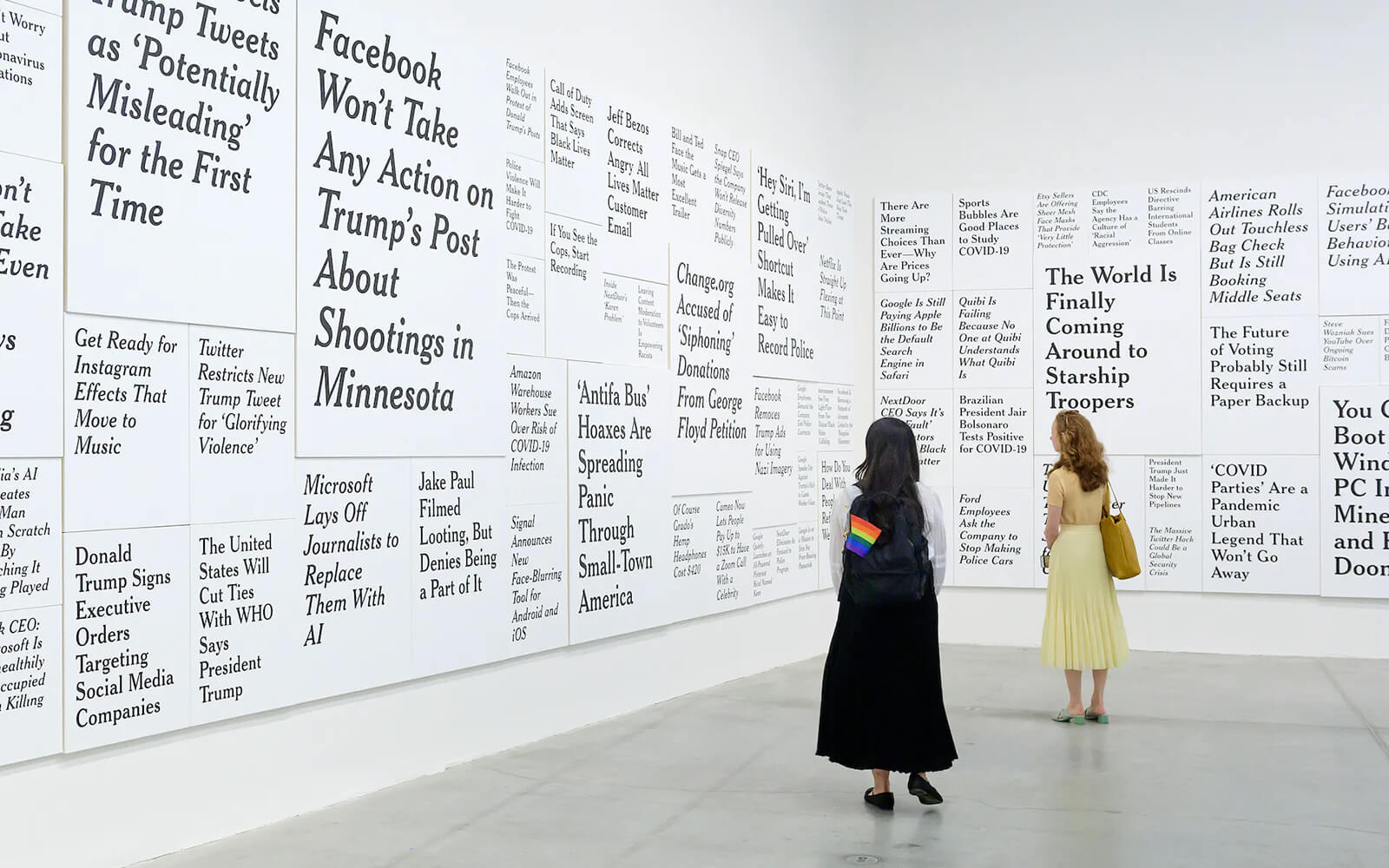
“Metaverse Landscapes” and “Uncomputables,” a pair of solo shows by New Zealander Simon Denny and Polish artist Agnieszka Kurant, open at Kunstverein Hannover (DE). The former features Denny drawing on landscape and abstract painting tropes to map the immaterial territory of crypto platforms in oil paintings (image: Metaverse Landscape 7: Somnium Space Small #138, 2023), while the latter showcases Kurant’s “quasi-alchemical transmutations” in sculpture (image: Post-Fordite 2021-22) and code.
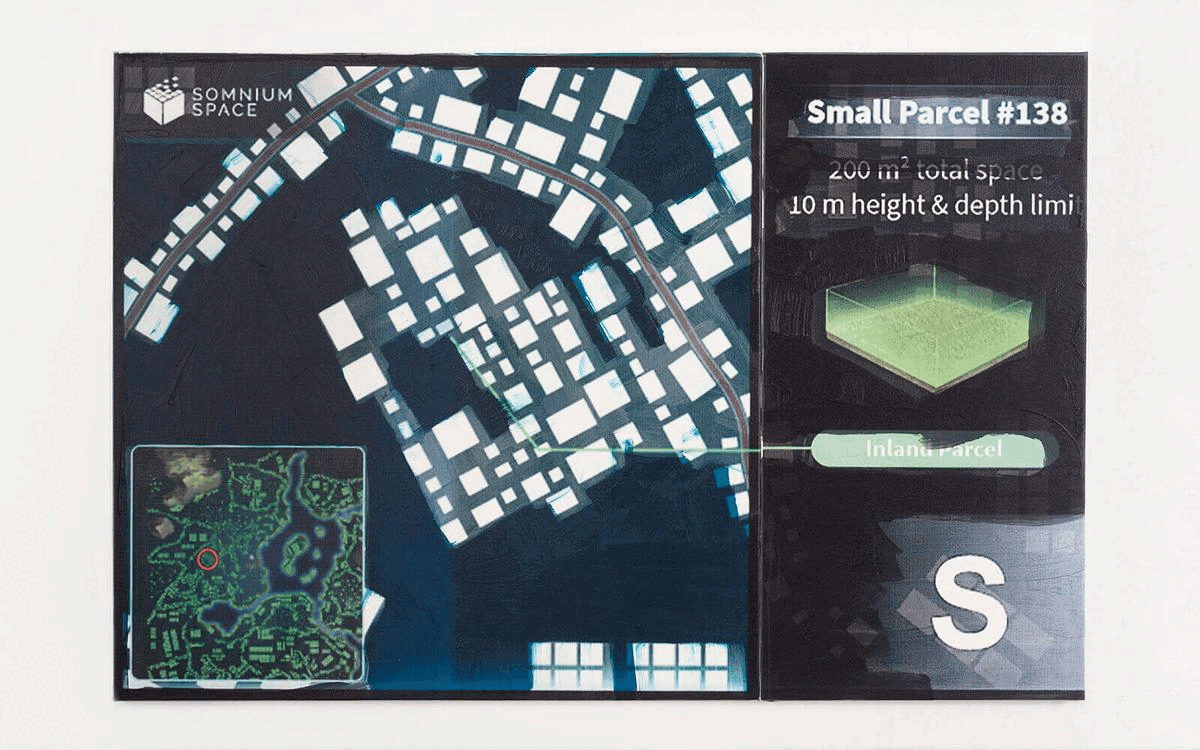
Navigating the gap between veteran digital artists and next generation upstarts, “Machine Violence” opens at Postmasters Gallery in New York City. Twelve artists including Damjanski, Huntrezz Janos, Eva & Franco Mattes, and Jennifer & Kevin McCoy present works spanning machinima to painting. Of note: the show includes Biennale.py (2001, image), the Mattes’ 49th Venice Biennale contribution, in which a connected virus-laden and ‘clean’ computer “infect and disinfect each other in an endless cycle.“
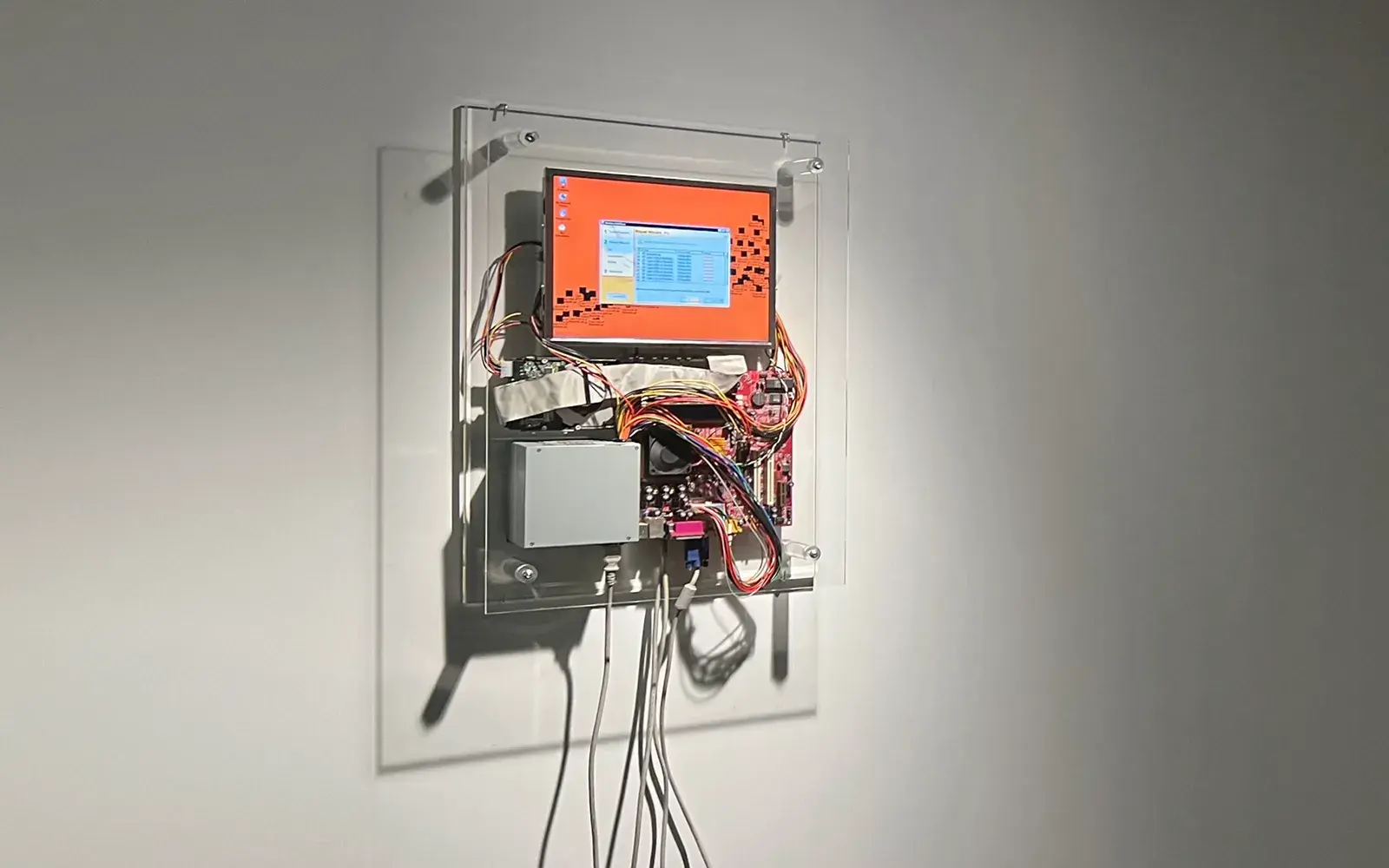
Completing the NFT-release-to-exhibition trajectory in just six months, Tyler Hobbs’ “QQL: Analogs” opens at Pace New York. The American artist describes his solo show as “an examination of ways to integrate the hand and the machine in painting,” and explores the texture and imperfections introduced when using oil and acrylic paint to plot selected outputs of his eponymous circle packing algorithm. Closing the loop, each of the 12 large paintings on sale are bundled with the NFT used to generate it (e.g.)
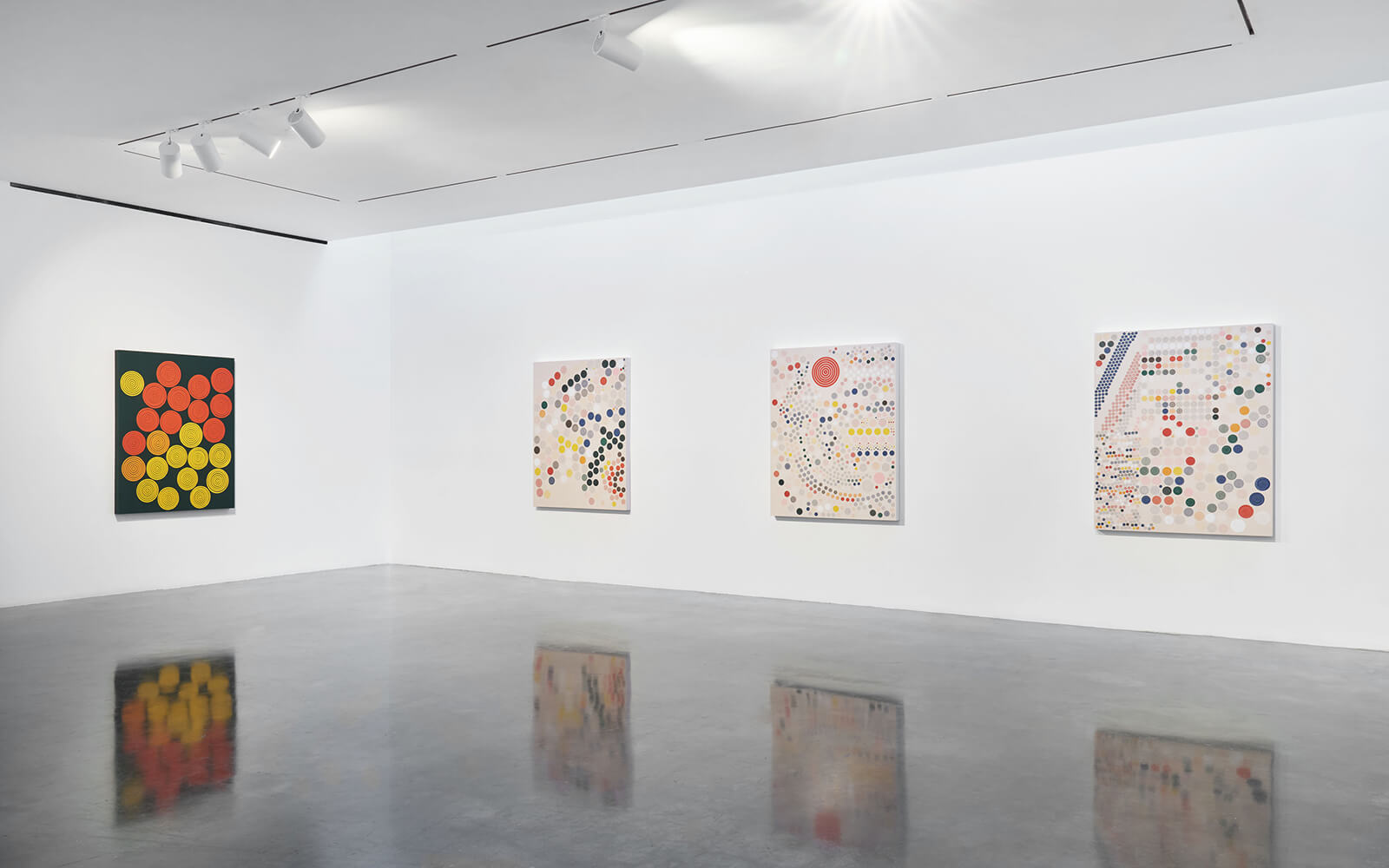
“Grids are emblematic of the array—the fundamental data structure around which all computer hardware and software is built. So, the grid is a natural visual form for computer–based digital art, and the aesthetic implications of this are far-reaching.”
“NOw/here,” an exhibition foregrounding two new large format material study series by Gian Maria Tosatti, opens at Milan’s Pirelli HangarBicocca. In the first, the Italian artist presents rust and gold encrusted iron panels, using oxidation to “restore a sense of the passing of time” while evoking the gold leaf of Byzantine mosaics (image left: Portraits, 2023); the second, is austere fields composed in graphite and charcoal, which “move from the real to the imaginative dimension” (right: NOw/here, 2023).
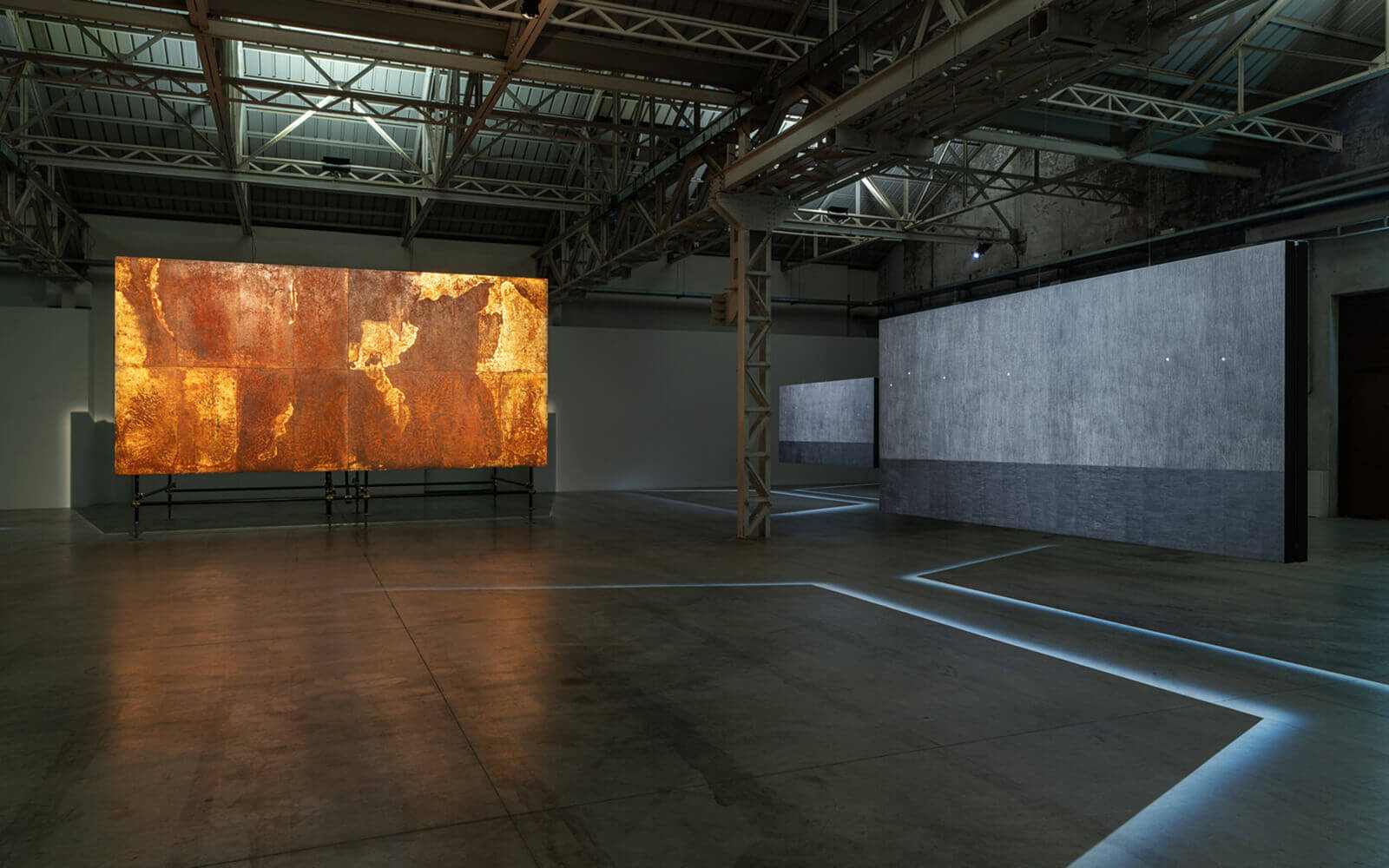
“They found a 95% similarity between the Madonnas in the two paintings and an 86% similarity in the Child.”
“DATA STREAMING,” featuring late Luxembourgish artist Michel Majerus, opens at Kunstverein in Hamburg. Lost to a 2002 plane crash, Majerus made waves in the dotcom era for playfully integrating digital images—videogames, animation, desktop publishing—into his paintings. Now, a major retrospective sees Kunstverein and 12 German museums mounting exhibitions reviewing the artist’s work “with the hindsight of artistic and technological developments of the past twenty years.”
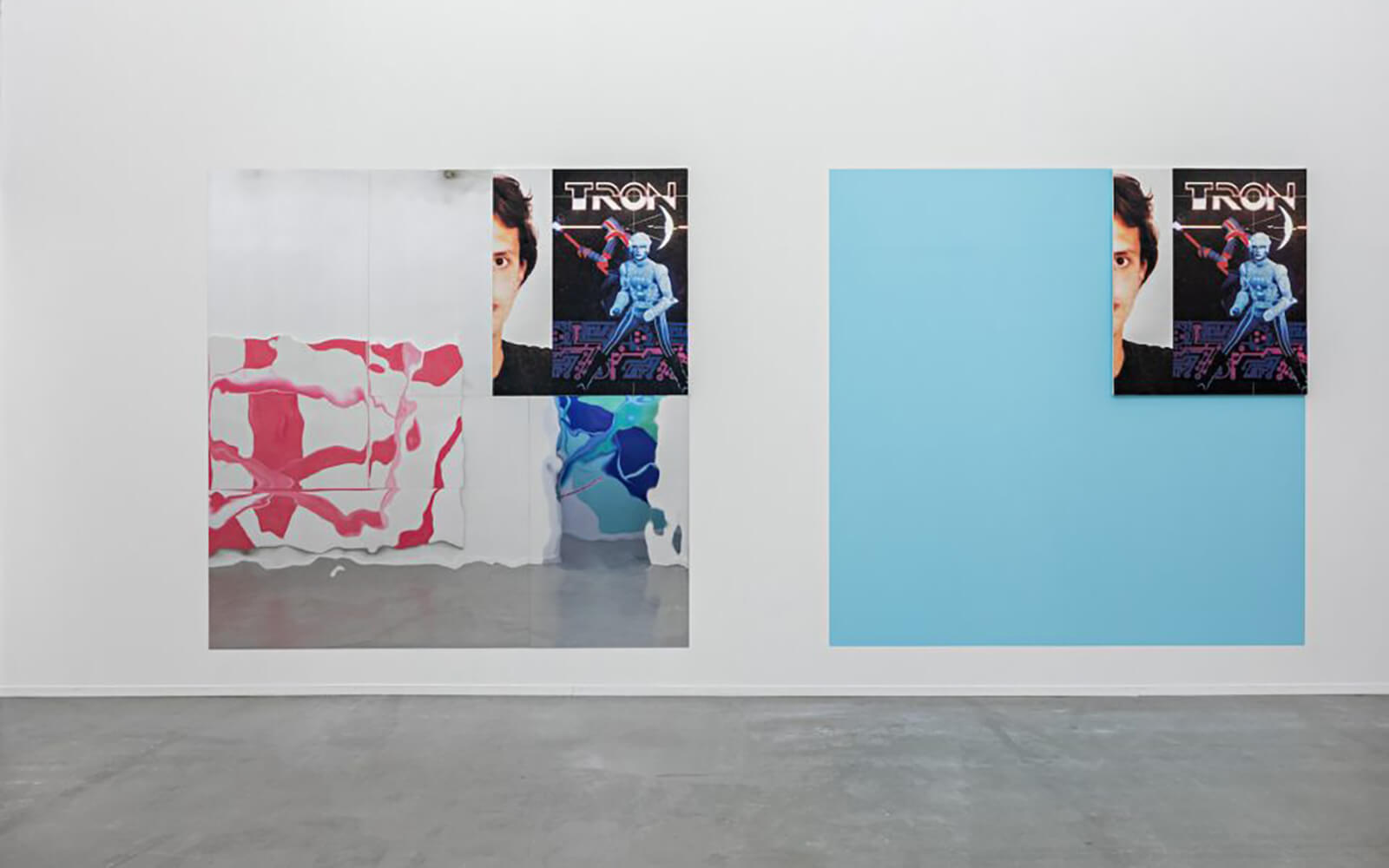
Swiss artist and designer Jürg Lehni celebrates the 20th anniversary of his seminal robotic drawing machine, Hektor (2002), in a commemorative Twitter thread. “Imperfect and full of character,” the hanging computer-controlled spray-paint plotter drew at transmediale, Design Museum London, and the MoMA, and remains a DIY marvel for its time: “edged circuit boards, assembly-programmed microcontrollers—we did everything by hand,” Lehni notes about making in the pre-fab era.
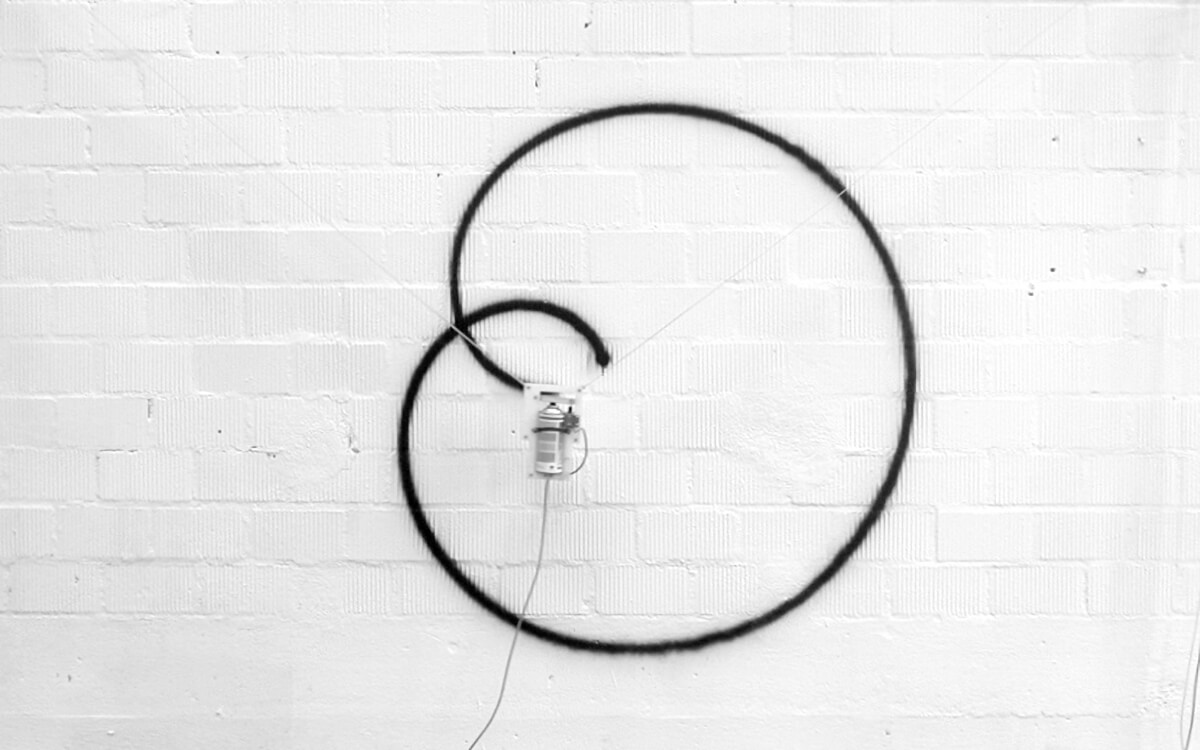
“These works consisted of painted boxes and floppy disks describing the imaginary software, which was so hypothetical that it could only be suggested by invented titles and handmade images.”
“Basha’s paintings are dominated by circles, which she creates with her feet, while her lines are created by a painting arm.”
From 15th Century painting to NFTs: “Meta.Space: Spatial Visions” opens at Francisco Carolinum in Linz, Austria, gathering over 30 artists that examine “social, real, and imaginary space.” Next to the virtual worlds of late luminary Herbert W. Franke, for example, towers the site-specific ‘crypto sculpture’ by Alexander Grasser and Alexandra Parger. Open Architectures (image) is a wooden model of one of 50 community structures built collaboratively via interactive NFT.
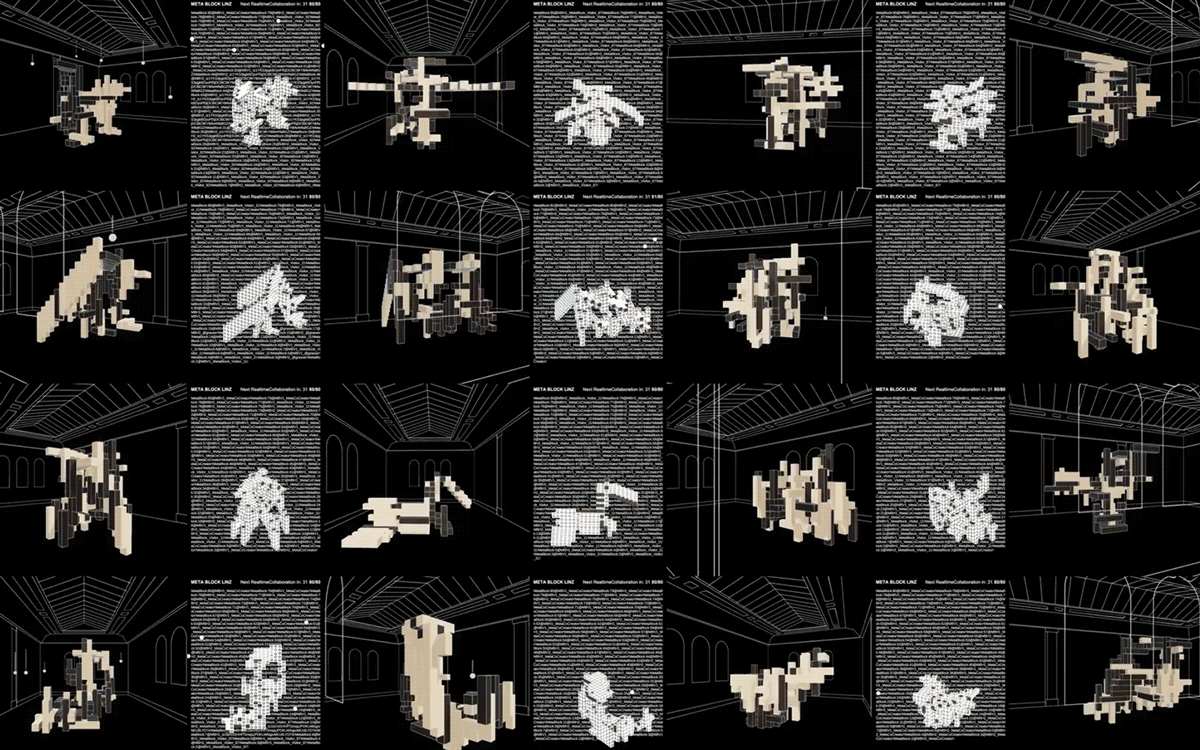
“I recently mounted a section of tracking to the ceiling of my home studio so I could be hoisted out of my wheelchair to reach heights and canvas sizes I otherwise wouldn’t be able to access.”
Extending out of Oli Sorenson’s visual cataloguing of the technological artifacts and compromised landscapes of our current era, “Diamond edition: Panorama of the Anthropocene” opens at Montréal’s ELEKTRA Gallery. For the show, Sorenson adapts material from the his ongoing painting and inkjet series about the perennial clash between production and nature (image: Oil extraction detail, 2020) rendered in the style of “Minecraft’s landscapes and Peter Halley’s geometries,” and (re)presents it on angled digital displays.
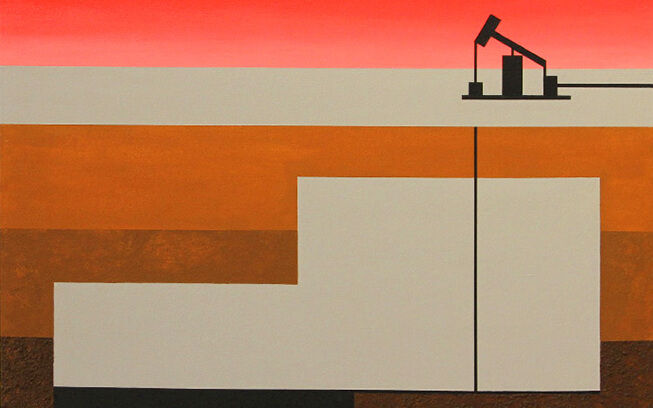
Damien Hirst releases his first NFT collection. In The Currency, the British artist riffs on artist multiple and NFT conventions with a physical-digital hybrid drop. Taking place through the Palm platform, NFTs representing 10,000 20 x 30 cm polka dot paintings (authenticated with custom paper, a hologram, and Hirst’s signature) are on (pre)sale for $2,000 USD; buyers ultimately choose to keep the NFT or receive the original painting—the remaining tokens and paintings will be burned.
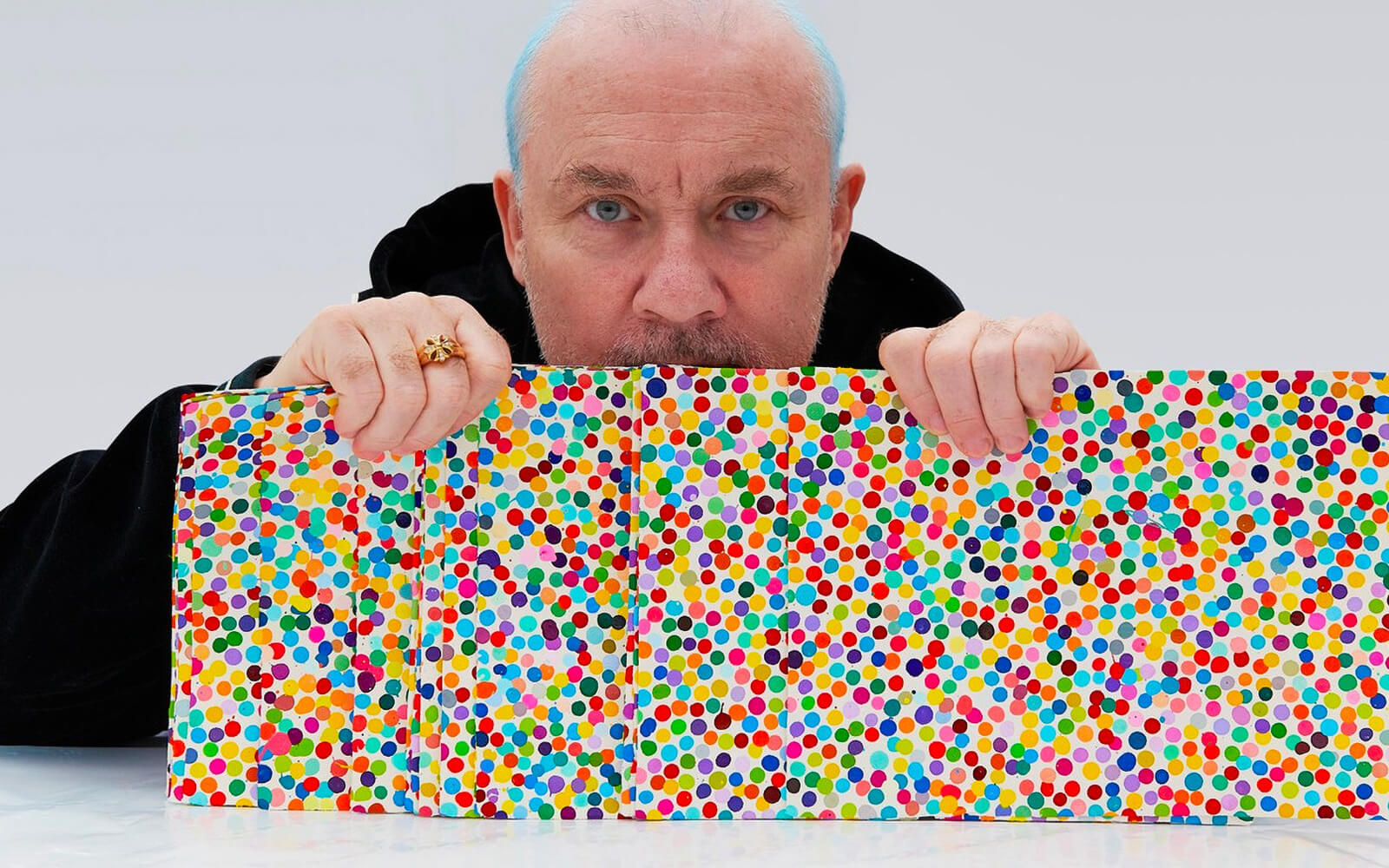
Daily discoveries at the nexus of art, science, technology, and culture: Get full access by becoming a HOLO Reader!
- Perspective: research, long-form analysis, and critical commentary
- Encounters: in-depth artist profiles and studio visits of pioneers and key innovators
- Stream: a timeline and news archive with 1,200+ entries and counting
- Edition: HOLO’s annual collector’s edition that captures the calendar year in print
